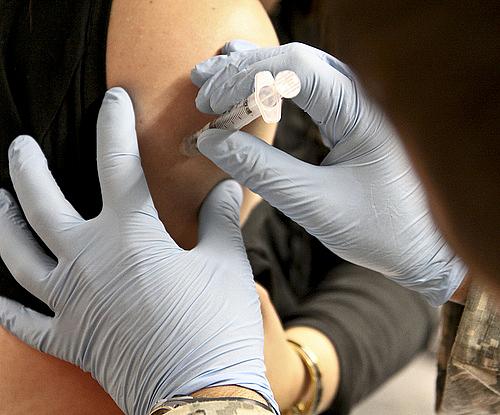Double Dipping: Four Tips from USA TODAY’s Injection Safety Investigation

I rarely read an entire story on my phone, but when I saw the headline Dirty medical needles put tens of thousands at risk in USA TODAY on Thursday, I had to click through all nine pages of it.
In a short video that summarizes the new investigation by Peter Eisler at USA TODAY, there are two sentences that sum up the feelings of so many victims of medical errors.
“Injection safety errors drive me crazy, because we should be focusing on the very complex challenging problems. We’re seeing basic problems with injection safety that were solved decades ago.”
That’s Michael Bell at the Centers for Disease Control and Prevention. He’s the associate director for infection control in the Division of Healthcare Quality Promotion, and he’s written about the problems of health care workers using single-use medication vials multiple times.
The video by Chris Machian and Lesley Webster is a great encapsulation of the piece. The reporting that went into the story is even more impressive. Here are four tips for reporting on similar problems.
Keep the safety risks in perspective. Eisler noted high in the story that most people who receive injections are not at risk.
Without question, the overwhelming majority of the hundreds of millions of injections administered annually in hospitals, nursing homes, clinics and doctors' offices are done safely and without incident. But a significant percentage of clinicians -- some studies suggest more than 5% -- don't follow accepted safety standards. That translates into a lot of bad shots.
"It's a huge issue. … It makes us crazy," says ... Bell ... . "We're trying to eliminate a range of harms in health care -- high-level, complex challenges -- and we look behind us and these basic, obvious, completely preventable problems are still occurring. ... It really comes down to a matter of greed, ignorance or laziness."
Examine a national problem from the states up. When I read the piece on my phone, I actually missed the part where Eisler explained how he reported the story. He wrote:
USA TODAY reviewed state and federal outbreak reports, regulatory records and court documents to gauge the scope and impact of unsafe injection practices. The newspaper also interviewed public health officials, doctors and nurses -- and victims.
Clearly a big resource for Eisler was the CDC’s Morbidity and Mortality Weekly Report, which should be a must read for all health writers. In July, the MMWR reported on the MRSA outbreaks in Arizona and Delaware that Eisler later used in his lead. Three months prior, Delaware essentially tipped reporters to this story when it released its own announcement of the outbreak investigation. Another great source for state information on national problems is the Department of Health and Human Services federal Form 2567, which states fill out when they are inspecting health care facilities.
Get to know some new acronyms. Health writers spend a lot of time talking with the CDC and talking with or at least trying to talk with the FDA, which is notoriously tight lipped. But how many of you have ever contacted the GAO (U.S. Government Accountability Office)? In July, the same month that the CDC reported on the outbreaks in Delaware and Arizona, the GAO released a 38-page report on unsafe injection practices with the pointed title “HHS has taken steps to address unsafe injection practices, but more action is needed.” Jaded journalists may experience a bit of déjà vu upon seeing a title like that. Aren’t all government agencies perpetually in a state of “more action is needed”? This report, though, is a quick and illuminating read.
Show what you don’t know. USA Today used the “tens of thousands” estimate in its headline because the best number that Eisler could find was the one the CDC has been using as part of its One And Only campaign, launched in July. But he correctly notes that there likely are many more infections going unnoticed.
The CDC's official tally of 150,000 people who were affected by unsafe injections likely represents a fraction of all cases. Although that figure comprises all of the patients who got bad shots -- including those who weren't sickened -- it's based only on incidents that are reported, and many are not. Symptoms from injection-related illnesses, such as hepatitis, can take years to emerge, so many cases are not traced back to their true cause.
Antidote is going to highlight more of these double-dipping cases with single-use medications in future posts. If you have ideas, please send them my way via askantidote@gmail.com or on Twitter @wheisel.
Image by U.S. Army Corps of Engineers Europe District via Flickr

